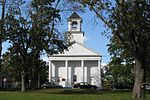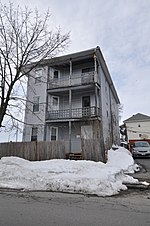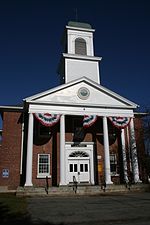Quinsigamond Branch Library
1913 establishments in Massachusetts1990 disestablishments in MassachusettsBeaux-Arts architecture in MassachusettsCarnegie libraries in MassachusettsLibraries in Worcester, Massachusetts ... and 4 more
Libraries on the National Register of Historic Places in MassachusettsLibrary buildings completed in 1913National Register of Historic Places in Worcester, MassachusettsSchools in Worcester, Massachusetts

The Quinsigamond Branch Library, now part of the Quinsigamond Elementary School. is an historic school building and former library at 14 Blackstone River Road in Worcester, Massachusetts. The building was originally built as a Carnegie Library in 1913 with funds donated by Andrew Carnegie, who was present to lay the cornerstone that year. It as since been converted into part of the Quingisamond Elementary School. The building was added to the National Register of Historic Places in 1980.
Excerpt from the Wikipedia article Quinsigamond Branch Library (License: CC BY-SA 3.0, Authors, Images).Quinsigamond Branch Library
Auburn Street,
Geographical coordinates (GPS) Address Nearby Places Show on map
Geographical coordinates (GPS)
| Latitude | Longitude |
|---|---|
| N 42.231944444444 ° | E -71.881388888889 ° |
Address
Auburn Street 282
01611
Massachusetts, United States
Open on Google Maps








